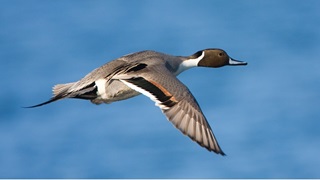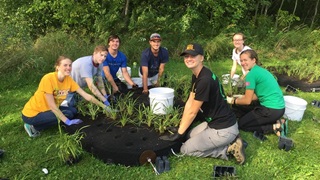A sensible, strategic approach to water quality in the Land of 10,000 Lakes
Conservation district tackles erosion-based sediment, phosphorous issues in Thief River Falls
Flowing through the Agassiz National Wildlife Refuge, and miles upon miles of verdant Minnesota farmland, the Thief River snakes back and forth across the terrain of the Red Lake River watershed.
Along the way, the river provides habitat for wildlife, provides communities recreational opportunities, and brings the city of Thief River Falls its drinking water.
Along that same winding path, however, Thief River also accumulates sediment and extra nutrients like phosphorous—caused by erosion from gullies, stream channel erosion and wind—that undermine water quality.
“The reservoir (used for drinking water) fills up with sediment, which needs to be physically removed,” explains Peter Nelson, water plan coordinator with the Pennington Soil and Water Conservation District (SWCD). “And the water treatment plant needs to use more chemicals to treat the water and remove the phosphorous.”
Improving water quality for the city of nearly 9,000 is the goal of the conservation district’s Stormwater Assessment project, an initiative that will evaluate water quality conditions in Thief River and Red Lake River, and prioritize tactics for improvement.
“The study will give us a detailed report that does not exist for the city of Thief River,” says Nelson.
In 2008, Minnesota passed the Clean Water, Land and Legacy Amendment, making a commitment to protect drinking water sources, wetlands and wildlife habitat, parks and trails, and bodies of water in the state.
The Minnesota Board of Water and Soil Resources, a state agency that improves and protects water and soil resources, offered grants for conservation projects supporting this amendment.
Pennington SWCD received nearly $91,000 for its Stormwater Assessment project through this grant—and a recent $25,000 donation from Enbridge’s Ecofootprint Grant Program fulfilled match funding requirements, allowing the project to move forward.
“It would have been difficult to come up with the match if it wasn’t for the Enbridge grant,” Nelson says.
The conservation district is responding to water quality issues in a thoughtful, prudent way, says Cindy Finch, Enbridge’s Duluth-based community investment advisor.
“They have assembled a team to perform a careful study of the situation and assess what factors are contributing to the water quality issues,” she says. “Only after the analysis is complete will they move ahead with projects to tackle sediment and phosphorous issues. It’s a great strategy.”
Pennington SWCD has partnered with a local engineering firm that specializes in water and environmental issues to conduct the assessment.
Once that’s done—tentatively, in December 2017—Pennington SWCD will be, according to Nelson, in a “really good position to acquire future funding to implement the projects identified in the assessment.”
And the community will be in a really good position to enjoy better quality water.
(TOP PHOTO: Students take part in the annual Minnesota Envirothon, coordinated each year by Minnesota's Soil and Water Conservation Districts, including Pennington SWCD.)










